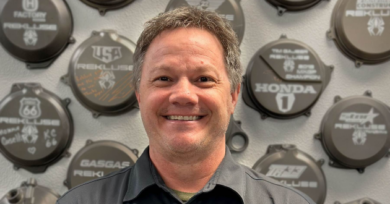Feb. 9, 2004 – Dealer Checkup
As I travel around the country visiting dealerships, I’m appalled at how seldom I find anyone in the parts and accessories department that is actively managing the department.
Seems that in most cases there is someone with the title to take credit when things go well and the blame when they don’t. And in many cases it seems everyone is “on the bus,” but no one is driving the bus.
This as usual causes me to start looking for the “why” by asking questions. Did these managers get the parts manager job because of their experience, training and management skills with customers, employees, purchasing, inventory control, merchandising, organizational, and a great attitude? Or where they just standing there when the last managers left?
The latter I believe to be true in most cases, which leads me to my next question. Is this epidemic level of lack of management ability because of lazy people with an “I don’t care” attitude? Is it because these managers do not have the basic mental capacity to do the job? Or do they have the knowledge but not the tools or procedures in place to get the job done?
In most cases it is simply a lack of knowledge about the job of managing the department. Without the knowledge of what it takes to “drive the bus” there is little chance that the motivation will be there to figure out what skills and tools are need to be successful.
A JUGGLING ACT
As a parts and accessories manager your job is somewhat like that of a juggler who has many balls to keep in the air at ALL times. With the proper training, practice, procedures and organization, it takes very little effort to keep the balls in the air. It’s getting the balls in the air that is so tough.
THE TEAM BALL
This personnel ball is the most critical one you manage. None of the other balls can be kept in the air if this one is not. It’s not just about having a team but having the right team well trained and focused on the goals of the department and the dealership. Do you know what your “return on effort” (ROE) is or should be?
THE INVENTORY BALL
You have parts inventory as well as accessory inventory to maintain. Parts are the items your customer must have in order to use their products; these primarily are available only through the OEM’s. Accessories are those items that “enhance” the ownership experience or are readily available through non-OEM outlets.
Do you have a well thought-out procedure for determining what items to stock and how many? Do you know what percentage of your parts inventory is active? What’s hot and what’s not? How much is enough? How much is too much? The market value of the products you are selling? How to show it and how to stow it?
Is your staff trained as to the difference between selling a part and selling an accessory? Do you know what your “return on investment” (ROI) is or should be?
THE CUSTOMER SERVICE BALL
The walk-in retail customers, phone customers, email/web customers, the sales department, your service department (which should be called the “gravy” department by the parts department for it truly is where the “easy money” comes from) how do you handle these people?
Do you know what days are the busiest? Which hours are the busiest? Do you staff accordingly or just do your best with whom you have at the moment?
Do you target market to your different customer groups and understand how their buying habits differ? Those groups in most dealerships are Cruiser, Sport, Touring, Dirt, ATV sport, ATV utility (hunting, homeowner), ATV work (Farmer, construction, plant) and PWC.
In many dealerships today women account for 20+% of the primary buyers of dirt, ATV, and PWC products. Do you and your staff understand the difference in selling to women compared to men or do you just miss that huge piece of the market place?
Do you know how many customers make up your potential market? What percent are doing business with you? If not with you, who? What is your annual profit per potential customer?
What is your profit per actual customer? Do you even know what it should be? Do you know of anyone who ever expected to win a race that did not know their lap times as well as the lap times possible?
THE COMPANY BALL
Maintaining interdepartmental harmony. Maintaining profits. Maintaining growth. Maintaining security. Maintaining accountability for the IRS, the banks and the owners. They’re all important.
A good parts manager doesn’t just work hard but is constantly looking for ways to work smarter through better systems and training for not only himself or herself, but for the whole team.
A FINAL NOTE
It’s not just one “super” thing that makes a Top Gun department fast, efficient, profitable, friendly and fun. Just like the juggler, it is not done with great beads of sweat and wild motions and emotions.
It’s simply the right combination of small things done correctly on time and in the proper order. Now, go drive your bus.








